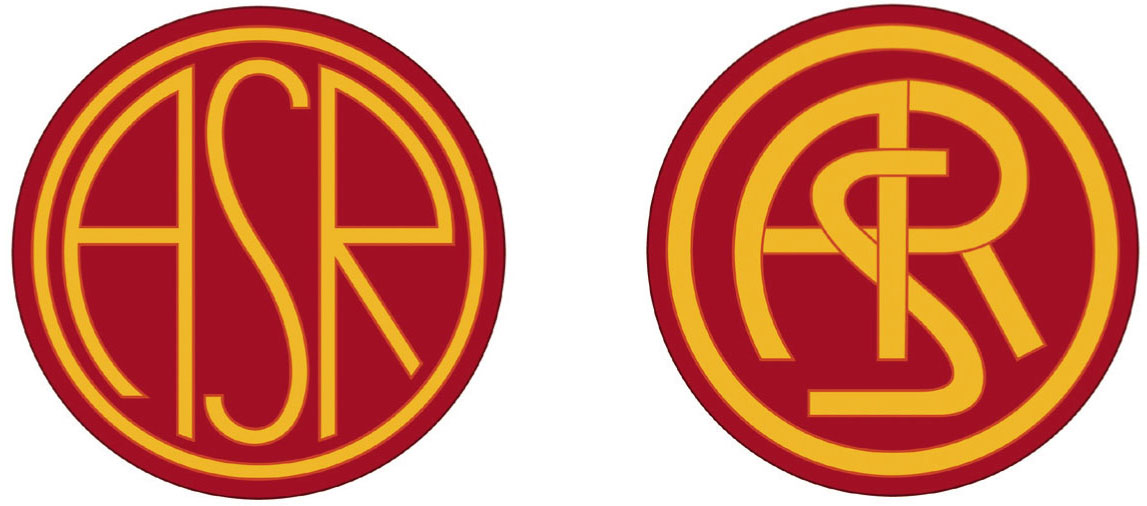
ROMA
THE INHERITANCE FROM ROMULUS AND REMUS
They say that all roads lead to Rome. Unfortunately, this doesn’t apply to football. The domestic titles have not ended up in the Eternal City but rather with the great northern clubs: Juventus, Milan and Inter. This was already true in the 1920s, when AS Roma was founded by the Italian fascist politician Italo Foschi to challenge their power. In 1927 he initiated a merger of three clubs in the capital: Roman FC, SS Alba-Audace and Fortitudo-Pro Roma SGS. The idea was to create a team strong enough to take on the northern football elite.
Initially the merger seemed effective. The newly born AS Roma came second in Serie A in 1931 and won its first league title in 1942. However, the club didn’t manage to build the footballing empire that people had hoped for, one that would match the city’s great past. Indeed, the club had to wait until 1983 before lifting the prize of the Scudetto again. This they did under the leadership of Nils Liedholm, who also led the club to three cup victories and the final of the European Cup.
Beyond the golden era of the ’80s, Roma did not establish itself as a continuously successful top team in Serie A until more recent times. After the club’s third Scudetto in 2001, they have often been fighting at the top of the table and have also picked up a couple of cup titles. All this with icons like Francesco Totti and Daniele De Rossi. But even so the clubs in the north are still not fearful.
CLUB: AS Roma
NICKNAME: I Giallorossi (the Yellow and Reds), La Maggica (the Magical One), I Lupi (the Wolves) and La Lupa (the She-wolf)
FOUNDED: 1927
STADIUM: Stadio Olimpico, Rome (70,634 capacity)
HISTORIC PLAYERS: Roberto Pruzzo, Bruno Conti, Aldair, Francesco Totti and Daniele De Rossi

1934–1936 and 1936–1938. The first emblem that appeared on the kit was introduced in 1934. The crest featured the club’s initials in the team’s now classic colours. The image was modernised after two seasons, both the circle and the letters becoming broader.

1937–1943. At the end of the ’30s, a logo was designed that was used only for away games and up to 1943. Then followed 30 years when Roma did not continuously sport any emblem on their kit. The crest from 1934 turned up sporadically, and during some seasons there was a variant with ‘AS Roma’ spelled out.

1978–1997. In order to bolster the sale of souvenirs and market themselves more efficiently, Roma introduced this club crest in 1978. The image represents the head of a wolf and is a gesture towards the city’s history. According to myth, the brothers Romulus and Remus were saved and nurtured by a she-wolf. Romulus, of course, went on to found Rome.

1997–2013. At the end of the last millennium, AS Roma returned to its roots when this crest was introduced, an emblem which the club had already used in 1928 – including on the season tickets. Then, as distinct from now, the club did not receive permission from the city to use the historic sculpture in the emblem. But in 1997 the parties came to an agreement and the club was able to use the image that they had wanted for decades. There are many copies of the statue of the she-wolf that nursed Romulus and Remus; the original is in the Capitoline Museums.

2013–present. On 16 April, 2011 Roma acquired new proprietors from the United States. One of their departures was to give the emblem a makeover, which was carried out in 2013. Apart from the different look of the image, the initials were changed to ‘Roma’ and the foundation year was shown. The new crest met with an enormous amount of criticism from fans, who felt that the sculpture had been vandalised and was no longer faithfully copied.

Starting in the early ‘90s, Francesco Totti played 619 games for the I Lupi, scoring 250 goals.